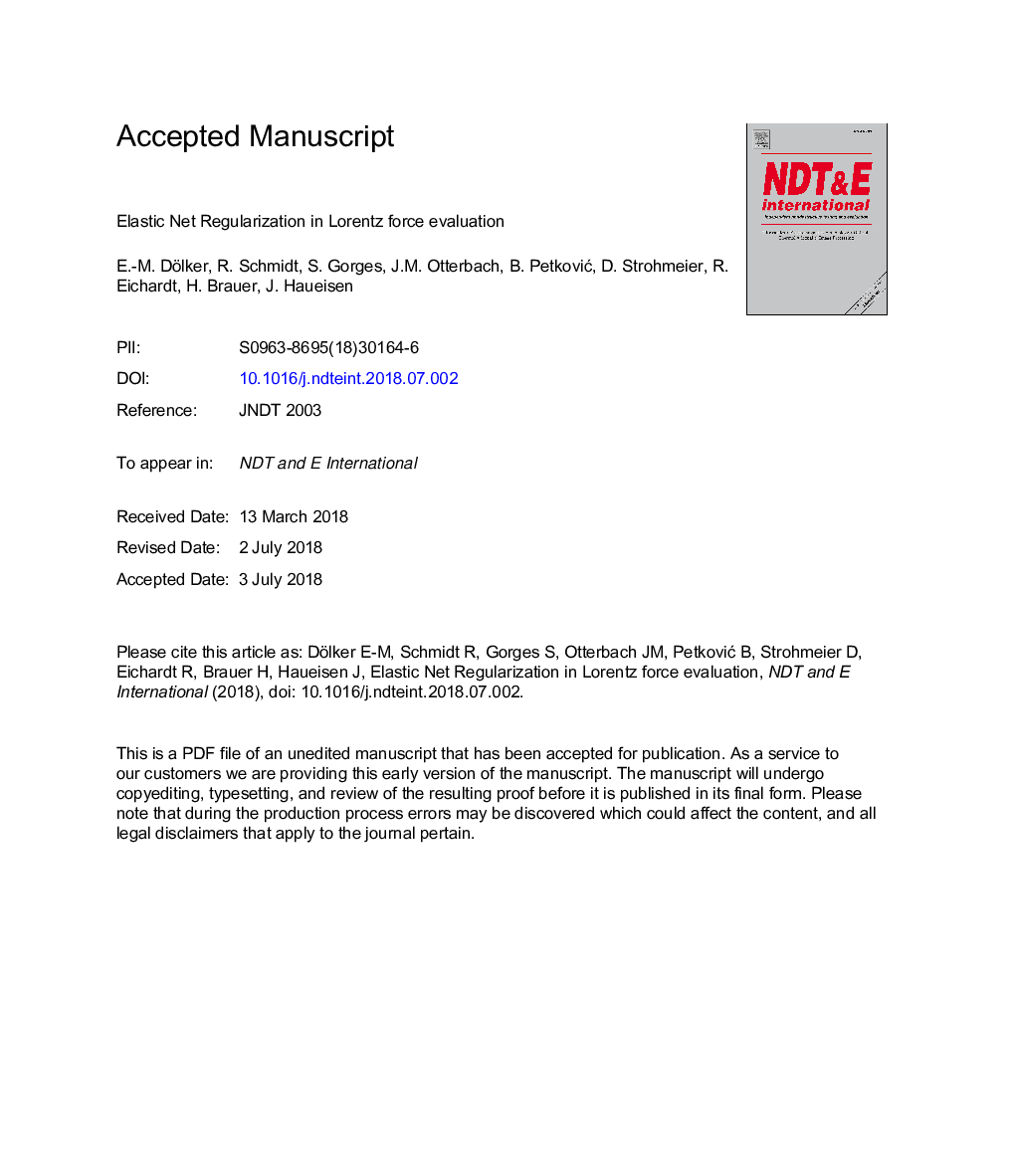| Article ID | Journal | Published Year | Pages | File Type |
|---|---|---|---|---|
| 6758195 | NDT & E International | 2018 | 18 Pages |
Abstract
Lorentz force evaluation is a nondestructive evaluation method applied for the characterization of sub-surface defects in specimen consisting of layers of conducting material. The movement of a specimen under investigation relative to a permanent magnet leads to Lorentz forces that are perturbed in the presence of a defect. A minimum norm estimation (MNE) with Elastic Net Regularization (ENR) is compared to MNE with Tikhonov-Phillips-Regularization (TPR) regarding the ability to determine defect properties from force perturbation signals. A cylindrically shaped defect with diameter of 5â¯mm and height of 2â¯mm is examined at depths of 2, 4 and 8â¯mm. Simulated data obtained by the finite element method and measured data are considered. ENR and TPR estimated the defect depth correctly for simulation and measurement data at depths of 2 and 4â¯mm, while at 8â¯mm, only ENR estimated the depth correctly. The defect sizes were slightly overestimated for both ENR and TPR. TPR produced additional spurious solutions at the boundary of the reconstruction grid. We conclude that ENR is more suitable than TPR for MNE in Lorentz force evaluation.
Related Topics
Physical Sciences and Engineering
Engineering
Civil and Structural Engineering
Authors
E.-M. Dölker, R. Schmidt, S. Gorges, J.M. Otterbach, B. PetkoviÄ, D. Strohmeier, R. Eichardt, H. Brauer, J. Haueisen,
